13 Essential Things to Know Before Traveling to Italy

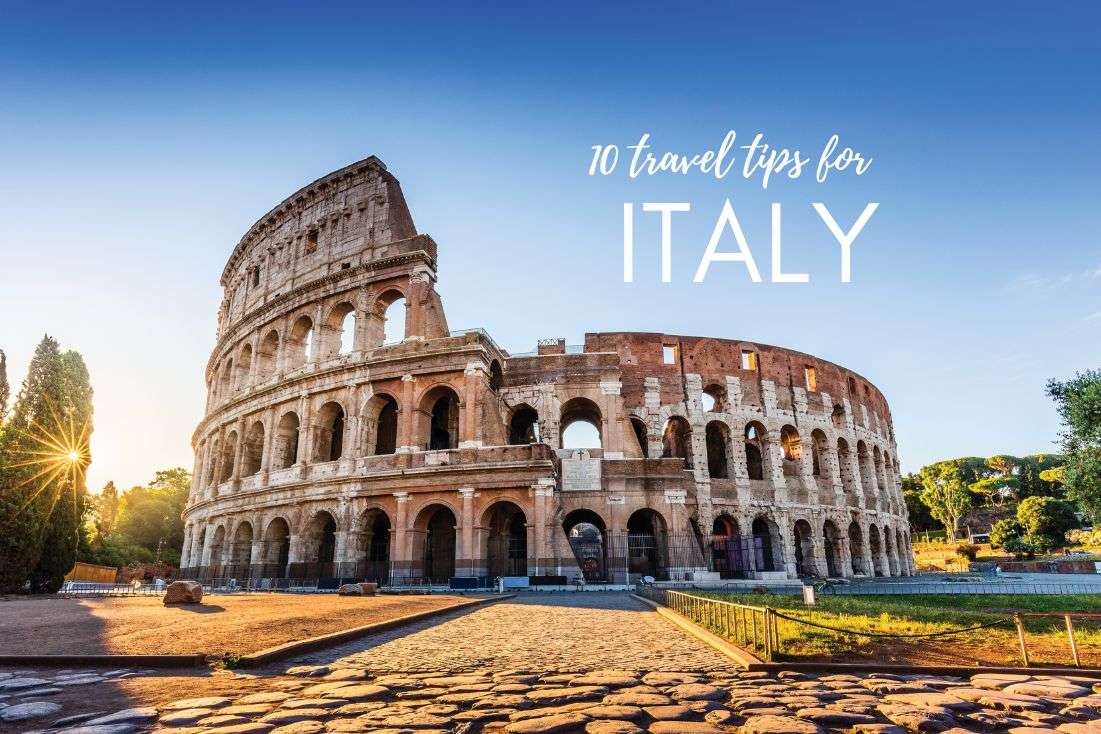
What will you learn in this article?
1. When to Travel to Italy: What to Expect in Each Season
3. Fuel Up the Smart Way and Save Money
4. Save Money on Hotels by Traveling in the Shoulder Season
Etiquette & Italian cultural tips
5. Make Restaurant Reservations: Don’t Leave It to Chance
6. Understand the Tipping Culture in Italy
7. Check the dress code before visiting a church
8. Slow Down and Enjoy a Siesta
9. Know the Written and Unwritten Rules of the Road
10. Be Prepared for Chaotic Parking in Italian Cities
11. Learn about the Highway Toll System in Italy
12. Always Look for a City Pass
13. Advanced Bookings for Tourist Attractions are a Must in Italy
After more than 20 visits to Italy, including my most recent trip in 2025, I've encountered various cultural differences and unexpected situations that left me frustrated at times.
Drawing from these experiences, I've compiled this no-nonsense list to help you avoid common mistakes and better manage your expectations when traveling to Italy.
I'll skip over the obvious travel essentials like ensuring your passport is valid and checking visa requirements—those are standard for any international trip. Instead, let's focus on practical tips and cultural insights that will genuinely enhance your Italian adventure.
What will you learn in this article?
Timing Your Visit
-
Best Time to Go: Italy offers unique experiences year-round. Spring and fall are ideal for city exploration due to milder weather and fewer crowds. Summer is perfect for coastal regions, but be prepared for higher temperatures and tourist influx.
-
Weather Variations: Italy's climate varies significantly from north to south. The Alps experience cold winters with snowfall, while southern regions enjoy a Mediterranean climate. Always check the local weather forecast for your specific destinations.
-
Public Holidays: Be aware of national holidays like Easter and Ferragosto (August 15), during which many businesses may close, and popular sites can be crowded.
Managing Money
- Cash is King: While major cities accept cards, smaller towns and establishments may prefer cash, especially in the south.
- Fuel up in the suburbs: Fill your tank outside the centers of the cities and highways. The gas is significantly cheaper there.
- Save Money on Hotels: Go during shoulder season. You can save as much as 200% each night.
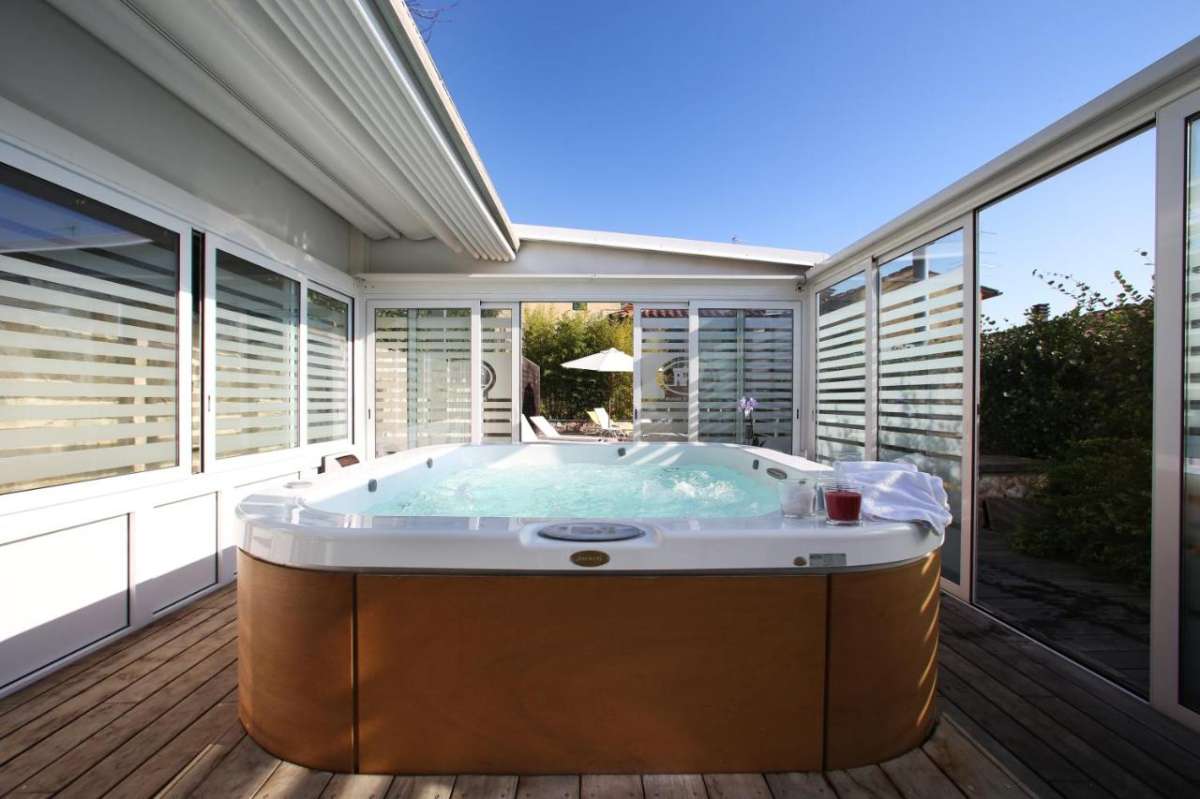
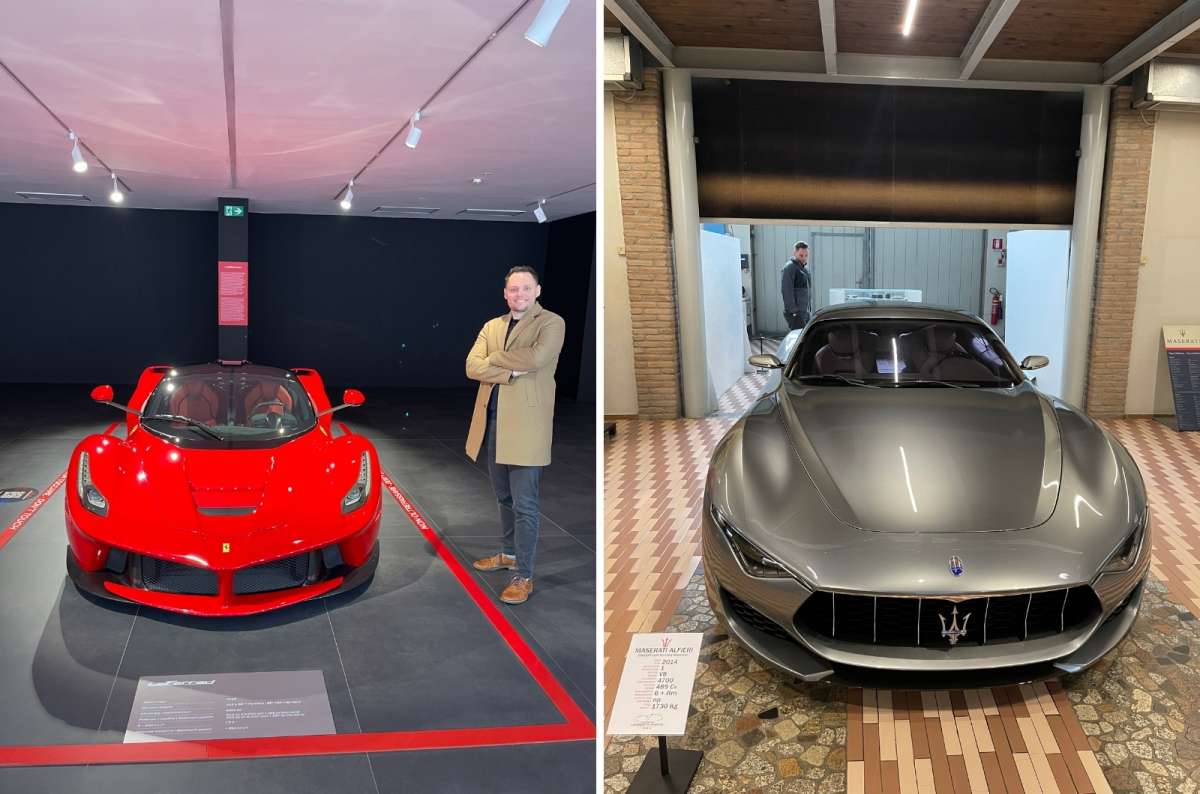
You could even get one of these with the money you save using my tips @ Panini Motor Museum in Modena
Etiquette & cultural tips
-
Dress Code for Churches: When visiting religious sites, dress modestly by covering shoulders and knees to show respect and ensure entry.
-
Siesta Time (Riposo): Many businesses close in the early afternoon, typically from 12 or 1 pm to 3:30 or 4 pm. Plan your activities accordingly.
-
Restaurant Reservations: It's advisable to book tables in advance, especially during peak dining hours, to avoid long waits or being turned away.
Transportation Tips
-
Driving in Italy: Be prepared for aggressive driving styles, especially in urban areas. Adhere strictly to speed limits, as enforcement is rigorous.
-
Toll Roads (Autostrade): Italy's highways often require toll payments. Collect a ticket upon entry and pay upon exit. Avoid Telepass lanes unless equipped with the device.
-
Public Transport: Italy boasts an extensive train network. Validate your ticket before boarding regional trains to avoid fines.
Maximizing Sightseeing
-
City Passes: Many cities offer tourist cards providing free or discounted access to attractions and public transport. Examples include:
- Roma Pass
- Venezia Unica City Pass
- Firenzecard
- Torino+Piemonte Card
-
Advance Bookings: Popular attractions can have long queues. Booking tickets online in advance can save time and ensure entry.
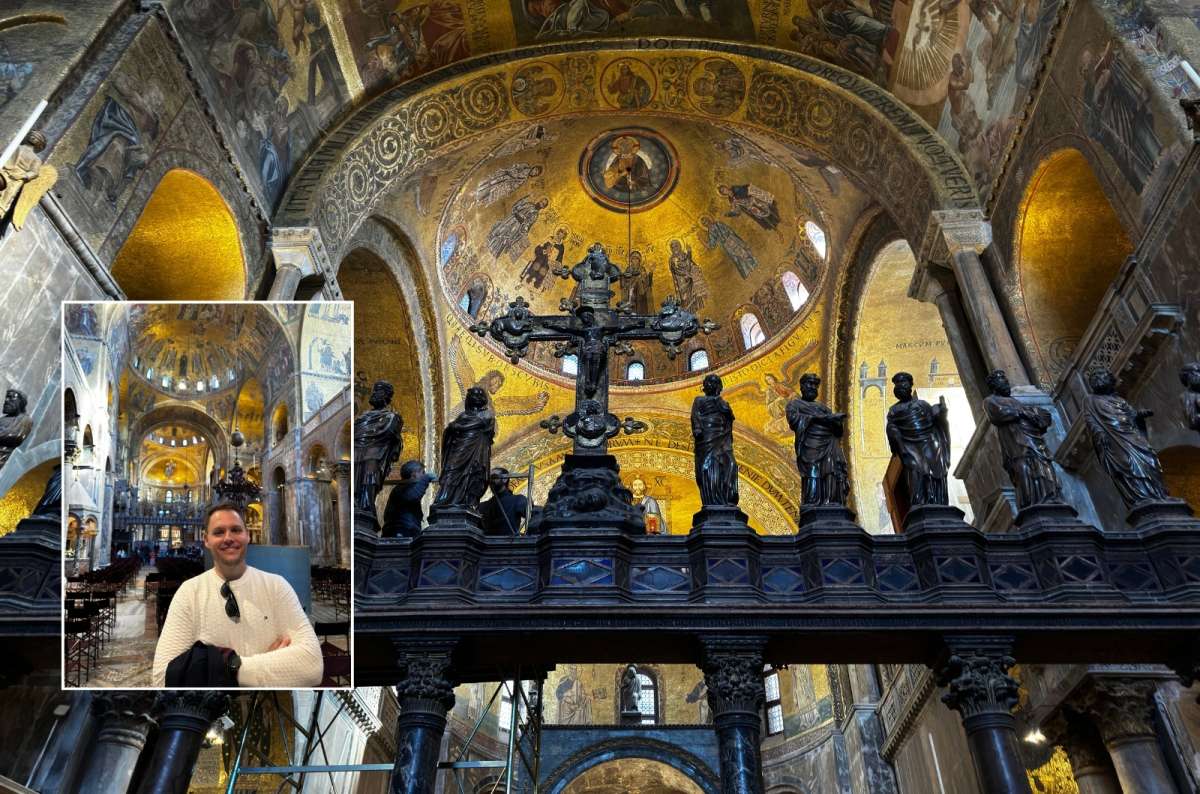
Me grinning from ear to ear because we managed to miss the crowds @ St Mark’s Basilica
Sometimes, all you need to do is take the first step... I've filtered out the best hotels in Parma for you
Save it for yourself to come back to later, or share with your friends on social media!
Timing your visit to Italy
1. When to Travel to Italy: What to Expect in Each Season
Italy is a year-round destination, but choosing the best time to visit depends heavily on where you're going and what you want to experience. The golden rule? Every region in Italy is different - not just in food and culture, but also in climate and tourist flow.
Summer (June–August): Hot, Crowded Coast, Quieter Cities
-
Cities like Rome, Florence, and Milan get scorching hot in July and August. Locals usually escape to the coast, leaving major cities surprisingly empty-except for sweaty tourists. The upside? You might find better accommodation deals.
-
Warning: I visited many cities in summer in Italy and i tis hot, hot, hot. Once, it was like 40 degrees celsius (104°F) in Rome in June. Northern cities like Verona or Venice are generally more bearable.
-
Coastal resorts (e.g., Amalfi Coast, Cinque Terre) are extremely crowded and expensive in August. Avoid if you’re not a fan of wall-to-wall beach towels and traffic jams. I recommend visiting in the shoulder season, May-June, September-October, as the crowds are manageable.
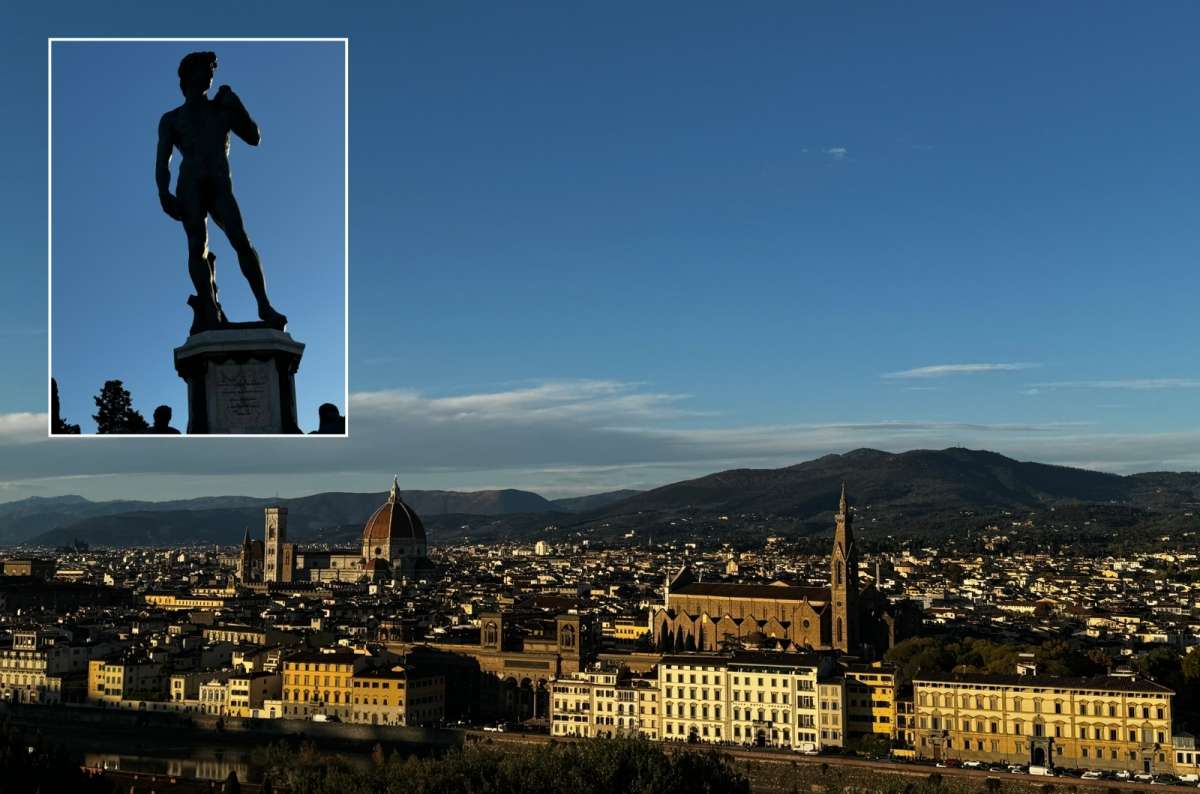
The heat in summer in Florence might make you understand why the bronze replica of David chose not to put on any clothes
Spring (April–June) & Fall (September–October): The Sweet Spot
-
These are ideal times to visit most parts of Italy, especially cultural cities like Rome, Venice, or Florence.
-
Expect mild weather, blooming landscapes, or fall colors, and fewer tourists compared to the high summer season. Sicily is generally warmer in these months, and up in the north, and especially in the Alps, you can encounter snow as early as October.
-
Avoid Easter. Typically in April, is a massive event in Italy—especially in Rome and the Vatican. It's great for religious travelers, but not for those seeking a relaxed visit. Expect large crowds and possible closures of key attractions.
Fun Fact: Once during a November visit, I got hit with -5°C (23°F) in Florence. So, you never know for sure what to expect.
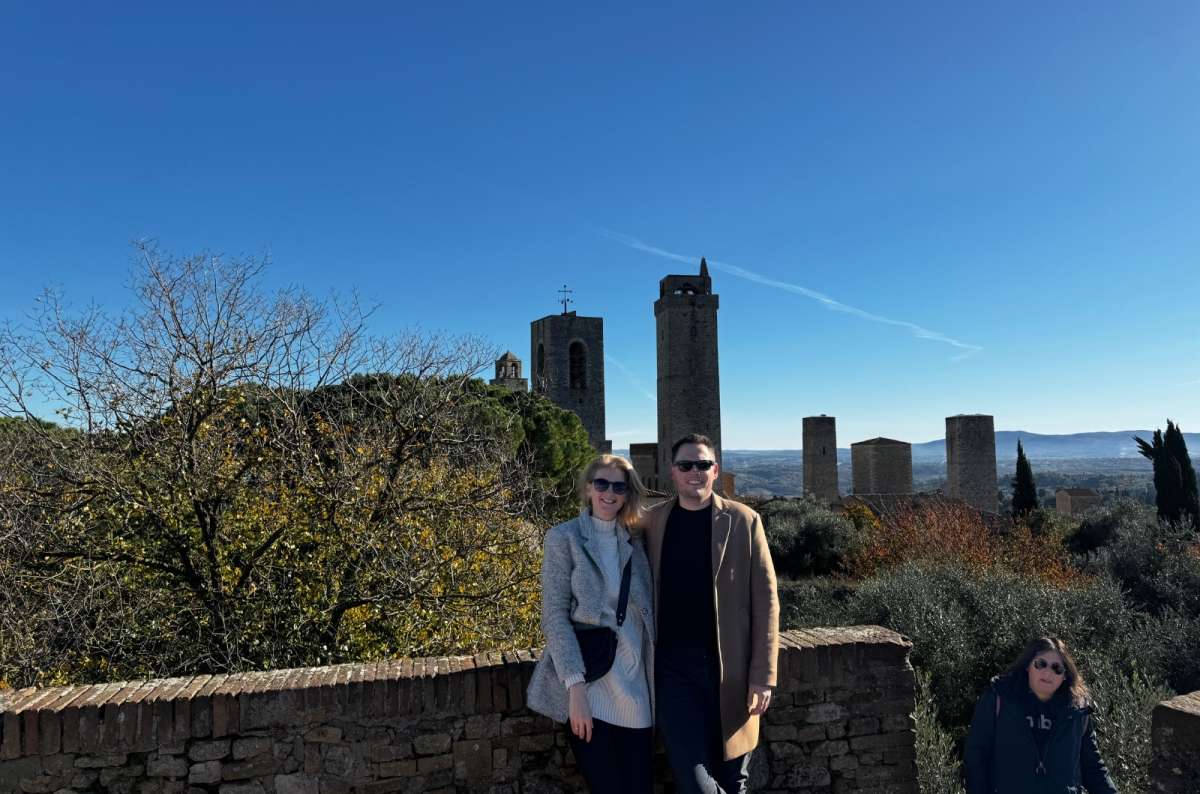
Sunny fall days in Tuscany make me feel a certain type of way, and I love it @ San Gimignano
Winter (November–March): Quiet Cities, Active Alps
- Low tourist season in most of Italy means shorter lines and cheaper stays—but also reduced hours at museums and attractions.
- If you're into winter sports, head north. The Alps and Dolomites (e.g., Cortina d’Ampezzo) are in full swing for skiing and snowboarding.
- Cities like Rome or Florence can be charming in winter, but check opening hours and dress warmly—many buildings aren’t well-heated.
Keep in mind: In Florence, Venice, and Rome, there are significant crowds even off season, and you still will have to buy your tickets for the main sights at least 2 weeks ahead.
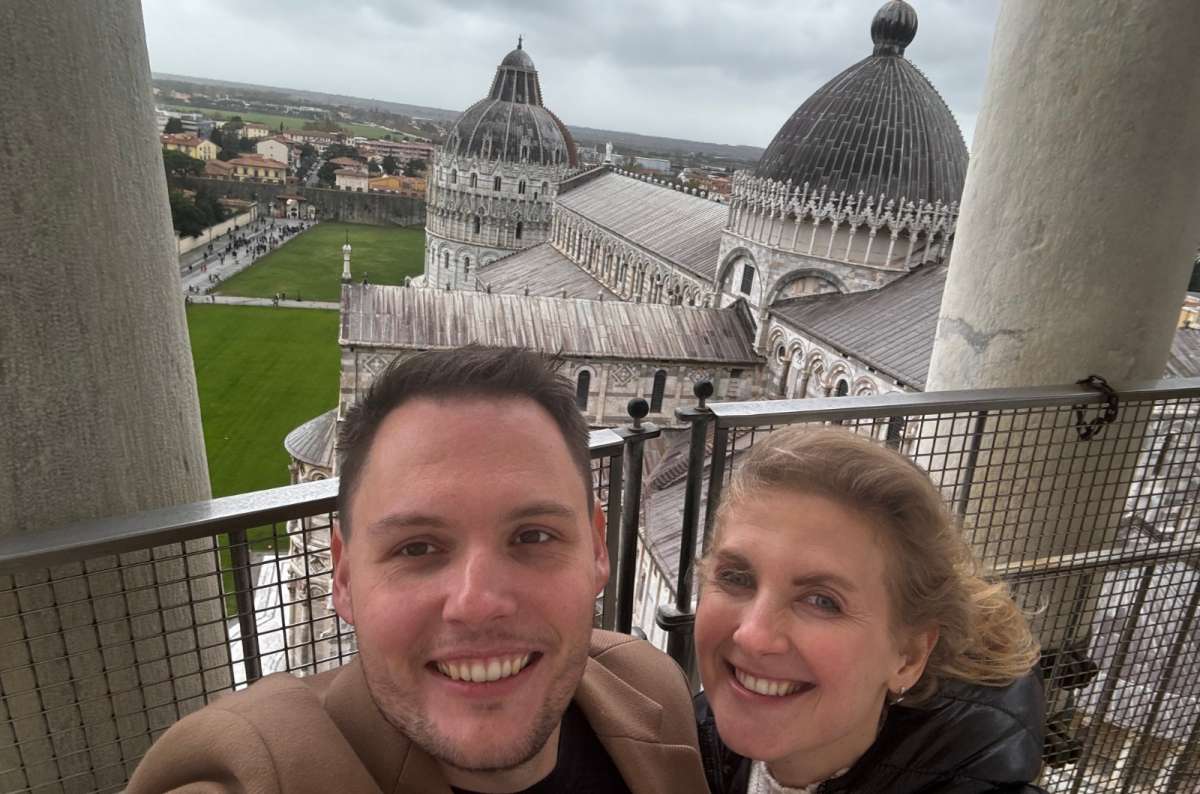
Be careful though, the wind can get a bit stronger as you move closer to the sea, @ Leaning Tower of Pisa
Best Time for the Coastline (Riviera, Amalfi, Cinque Terre)
- May and June offer the perfect balance—pleasant temperatures, blue skies, and fewer crowds. Locals haven’t yet migrated to the beach in full force.
- Avoid August unless you enjoy crowds and high prices.

When Should You Go?
- For culture & sightseeing: April–June or September–October
- For beaches & sun: Late May to early July
- For skiing & snow: December–March in the north
- To save money: November–March, avoiding holidays
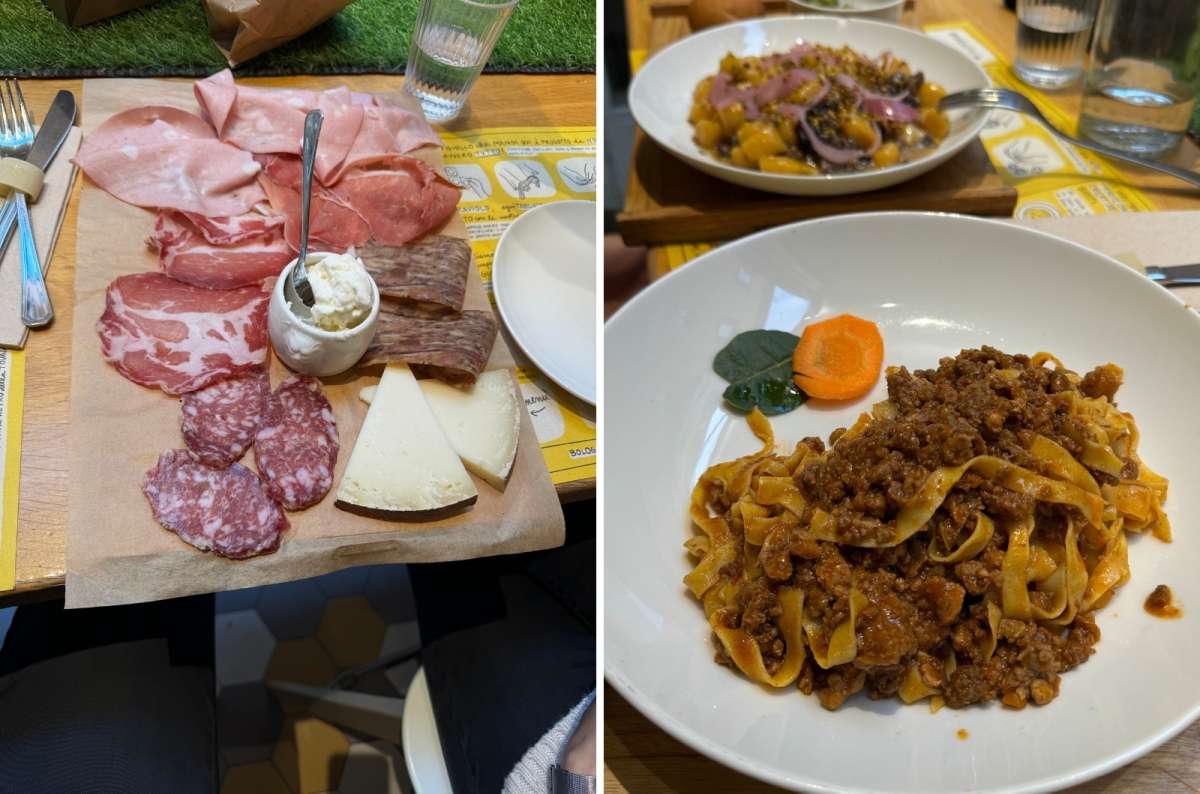
Imagine wanting to have Bolognese in Bologna and not being able to pay because you didn’t bring any cash
Managing Your Money in Italy
2. Always Keep Cash Handy
Don’t assume you’ll be able to pay with a card everywhere, especially in southern Italy and small towns. It’s common for local restaurants, cafés, and even shops to be cash-only, particularly for small purchases.
- Always carry some euros for situations like:
- Parking meters
- Market stalls
- Local eateries
- Public bathrooms (yes, some are paid!)
- Italy’s currency is the Euro (EUR ), and most places do not accept foreign currency.
Smart ATM Use
The most convenient way to get euros is to withdraw cash from local ATMs, known in Italy as Bancomat.
- Use ATMs attached to a bank branch (e.g., UniCredit, Intesa Sanpaolo) to avoid excessive fees.
- Avoid “nameless” standalone ATMs or currency exchange booths in tourist zones—they often charge hidden fees or poor conversion rates.
Pro Tip: Don’t use high-denomination bills (like EUR 100) for small purchases. It’s not only impractical—you’ll get a mountain of coins in return—but cashiers and waiters may not have enough change and won’t be thrilled.
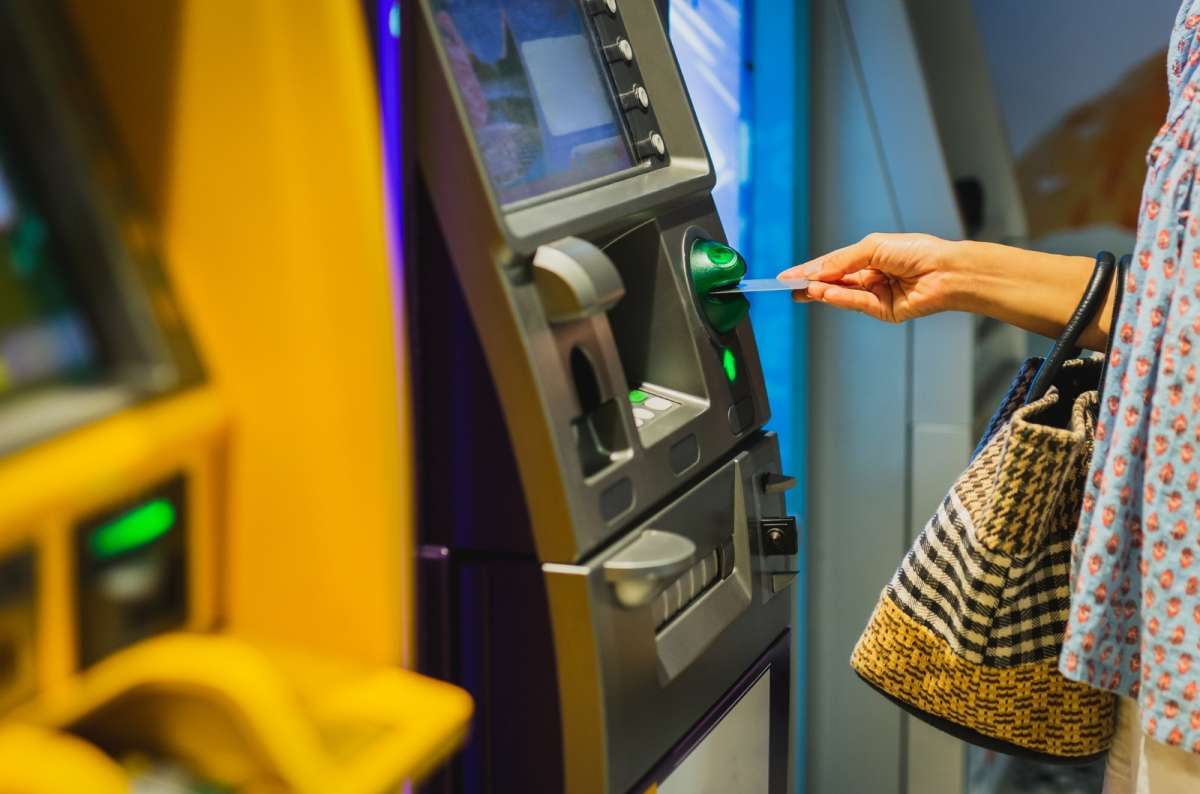
ATMs really can be tricky to figure out
3. Fuel Up the Smart Way and Save Money
If you’re renting a car or going by your own, fuel can become a major cost in Italy, especially on highways (autostrade) or in remote touristy areas.
Where to Refuel
- Refuel in suburban areas or just outside city centers, where prices are often much lower than at highway stations—sometimes even by 10–15%.
- Use apps like Prezzi Benzina (Italy’s GasBuddy equivalent) to find the cheapest fuel nearby.
Types of Stations
-
Self-service stations ("fai da te") are usually cheaper than full-service. This is tedious but eventually stupid-proof: usually, you choose the language in the upper right corner of the display, then choose the pump number and type of fuel, and you are ready to go.
-
Some gas stations close at night or during lunch hours, especially in rural areas—plan accordingly. This can be a major problem when you’re traveling in your own (rental) car, because sometimes you simply can’t fuel up, no matter how hard you want to.
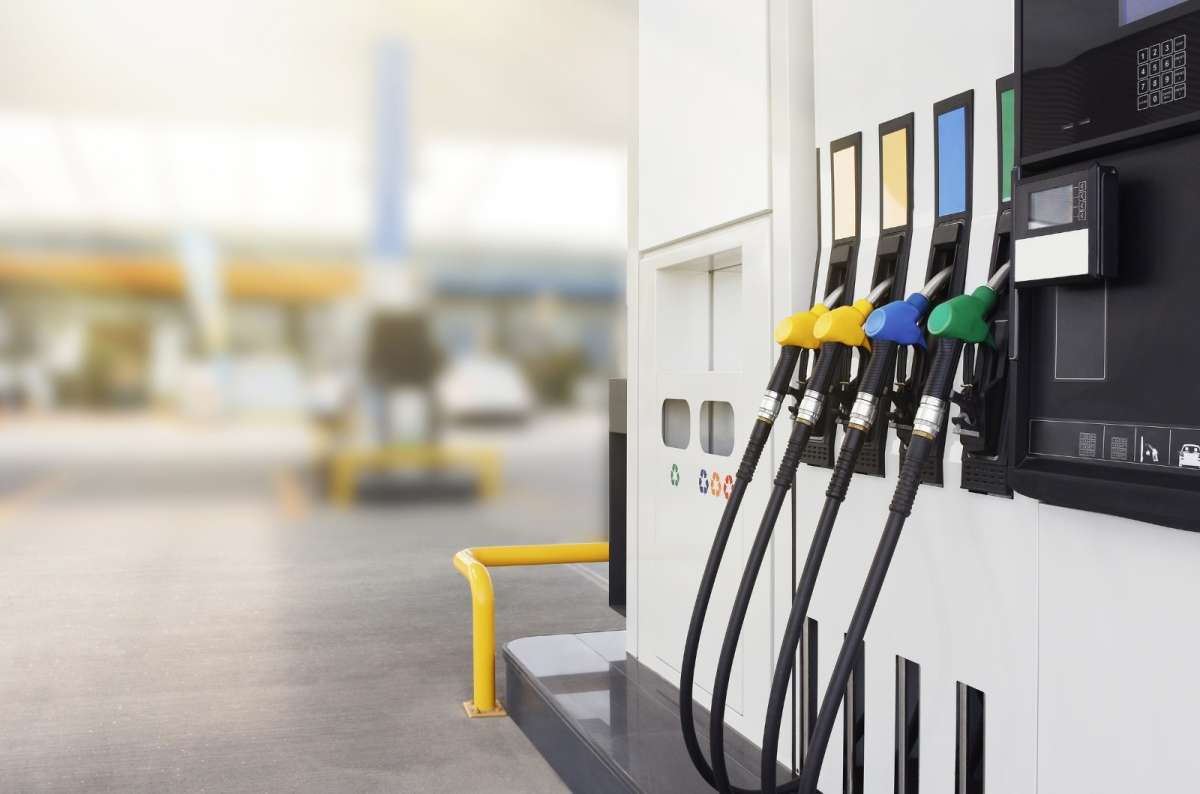
It’s interesting how diversified gas station culture can be
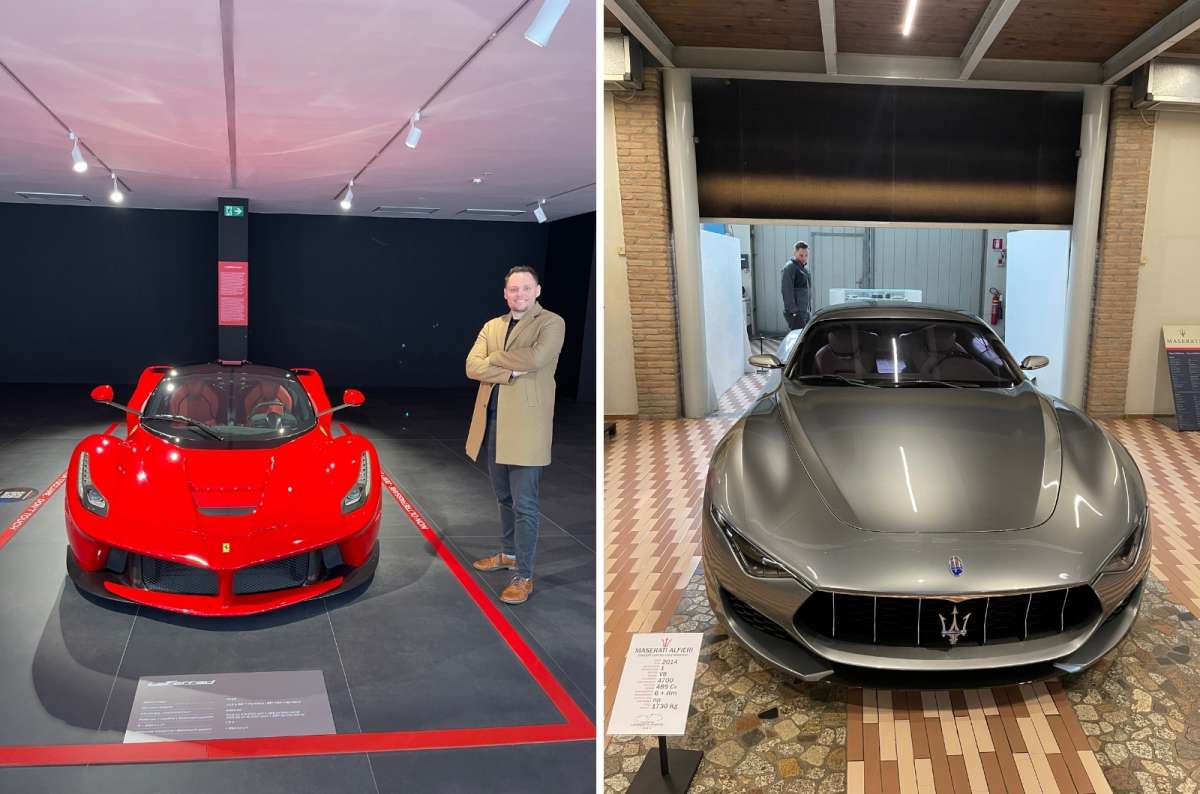
You can tell we really loved the Modena Ferrari Maranello museum, can’t imagine having to feed these in Italy though
4. Save Money on Hotels by Traveling in the Shoulder Season
If you’re visiting Italy for its cities, you should definitely go during the shoulder season (May–June or September–November).
I always travel during this time and save a ton of money. For example, a hotel that costs around USD 500 per night in peak season can drop to as low as USD 150. If you're staying for two weeks or more, that adds up to serious savings.
Alternatively, you can spend the same amount you'd spend during peak season—but upgrade to a much better hotel.
Btw, this is one of my favorite hotels in Italy >>

Etiquette & Italian cultural tips
5. Make Restaurant Reservations: Don’t Leave It to Chance
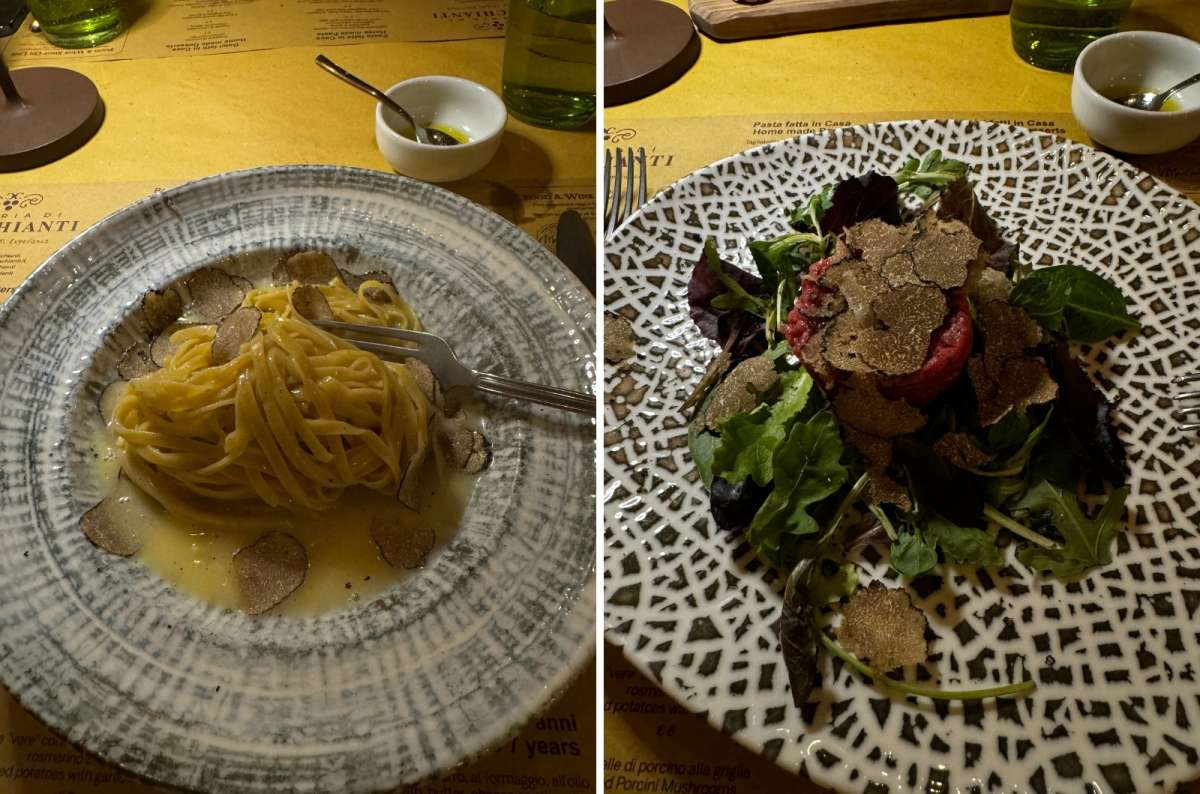
I know, me with the food again, but how could you risk missing out on any of this?! Can you tell I love truffles?
You are not in the US. In Italy, dining out is a ritual, not just a meal. Everyone does it, and without reservations, there are not enough seats for everyone.
Locals take their food seriously, and so do the restaurants. If you're hoping to grab a spontaneous dinner at a popular spot—especially in tourist hubs like Rome, Florence, or Venice—you might be out of luck.
-
Dinner starts late: Most Italians eat dinner around 8–9 pm, and good places fill up fast.
-
Limited seating: Many restaurants are small and family-run, with limited tables and specific dining hours.
-
Riposo matters: Between lunch and dinner (typically 3–7 pm), many restaurants close. So, if you miss the right time slot, you might have a long wait ahead.
Top Tips for Restaurants:
-
Make a reservation at least by the morning of the same day. If you plan on visiting an especially popular restaurant, reserve it at least a week ahead.
-
Without a reservation, you can arrive very early for dinner (if the restaurant is open) and hope for a spot. You will be dining alone, because everyone eats dinner late in Italy, but at least you’ll be eating!
-
Having said that, most restaurants open late, usually no earlier than 7:30 pm.

6. Understand the Tipping Culture in Italy
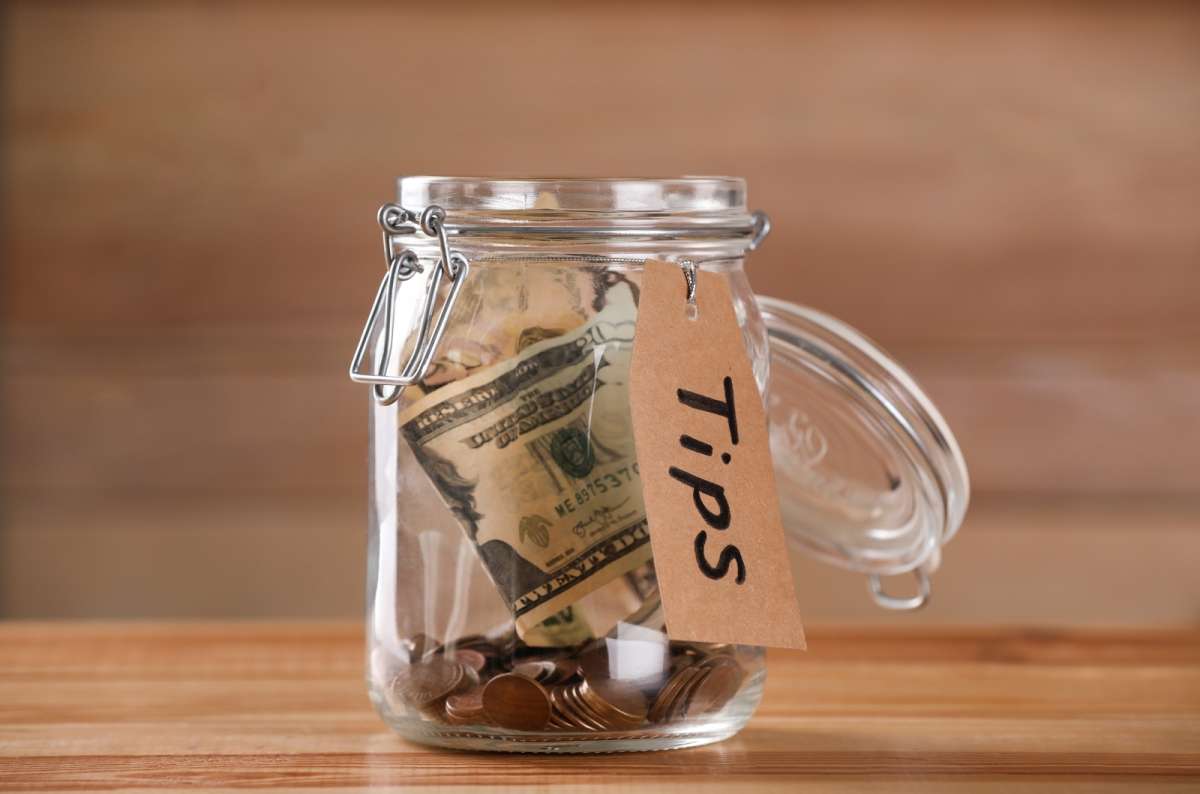
I feel like tipping in Italy can cause more faux pas than almost anything else
Tipping really depends on the region and the type of establishment, but generally speaking, Italians don’t tip.
I know, it feels strange; even after many visits, it still feels a bit awkward to me, like I’m being stingy.
But don’t fight it. Italian servers earn their income differently, and tipping just isn’t expected the way it is in some other countries.
Here’s what you should know:
-
If you really feel the urge, round up the bill to the nearest EUR 5 or EUR 10—no one will mind.
-
Most restaurants charge a coperto (cover charge), usually between EUR 1–EUR 5 per person. It covers bread and the privilege of sitting at the table—this is not a tip.
-
In fine dining restaurants, a service charge is often already included in the bill. Always check before tipping extra.
Pro tip: Using a piece of bread to wipe up the leftover sauce on your plate is not only allowed—it’s encouraged! It’s called “fare la scarpetta”, and it’s a way of showing the chef you truly enjoyed the meal. A delicious complement, Italian style.
7. Check the dress code before visiting a church
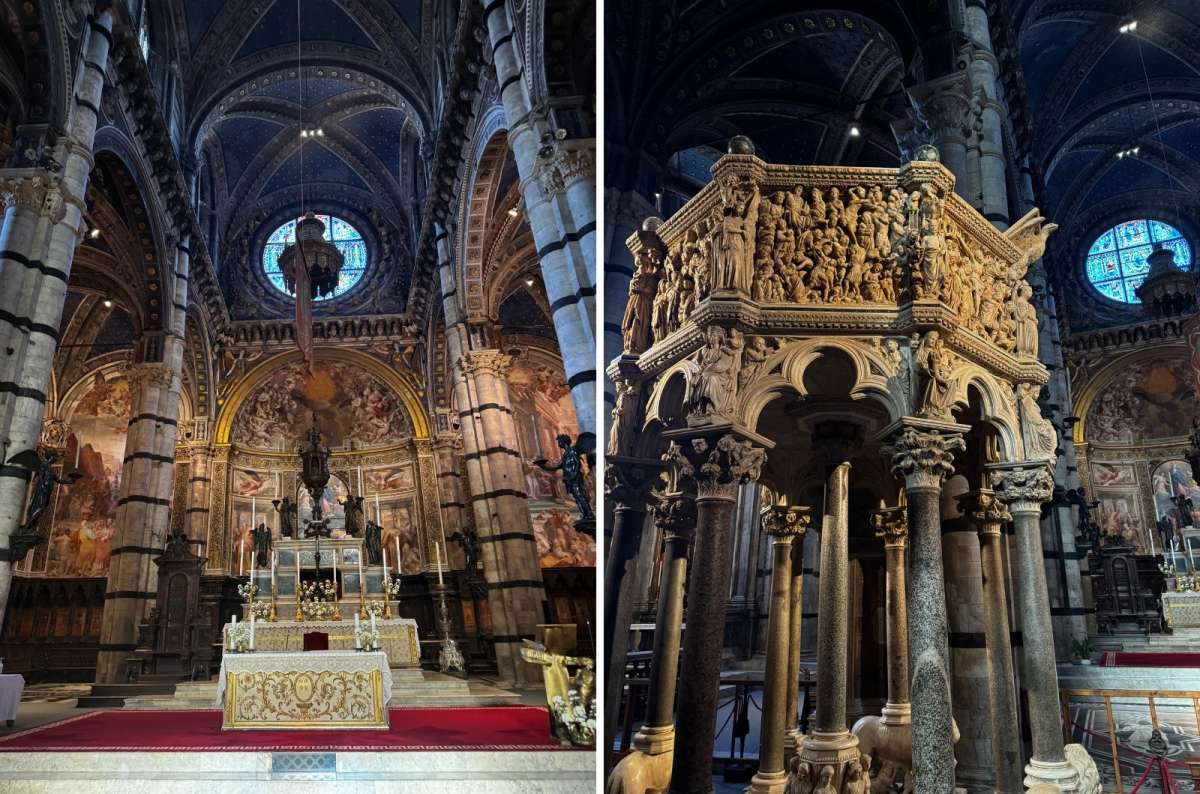
Locations like Duomo Siena would kinda make you want to dress modestly anyway
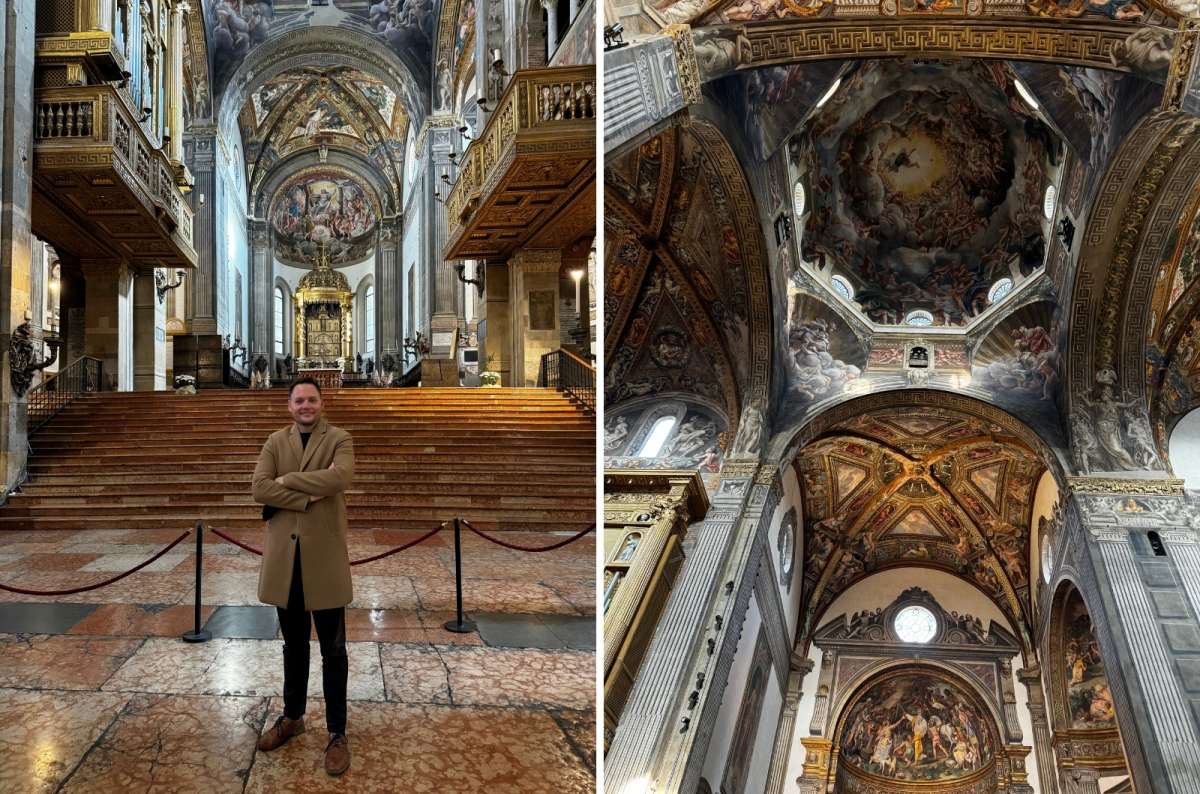
Pro tip: wearing a fall/winter outfit makes dressing modestly way easier @ Il Duomo a Battistero
Italy is quite a religious country, and while Italians don’t take many things seriously, they’re serious about faith. It also differs from region to region, but it’s generally considered rude to visit a church scarcely dressed. In southern Italy, you might not even get in if you wear shorts and a sleeveless top.
You might get away with it in the north, but it’s better to be polite and dress accordingly when you go to church. Dress modestly and avoid exposed knees and shoulders.
To be perfectly honest, I never had a problem with anything in an Italian church aside from leaving my hat on. But I was promptly advised by the nearest priest to take it off, problem solved.
8. Slow Down and Enjoy a Siesta
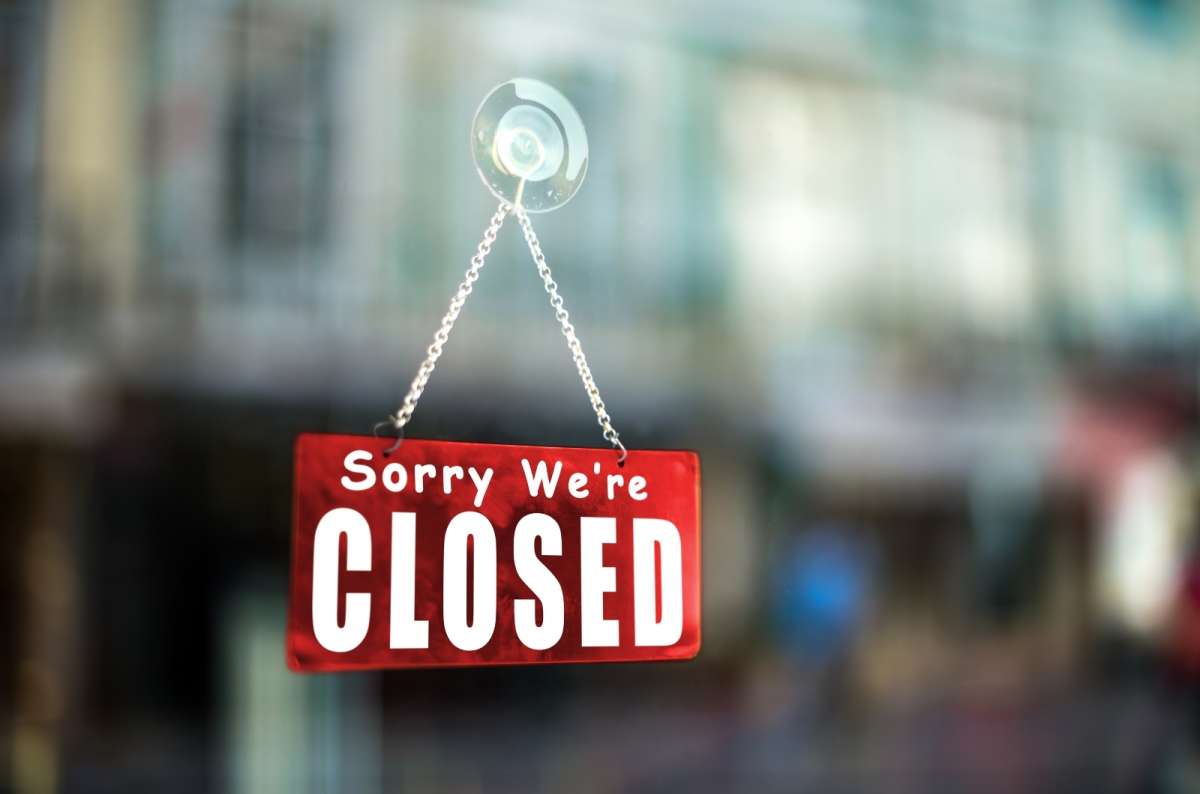
Sometimes I wonder what it would be like if we had siestas in Prague, too... nah, I’m way too performance-oriented
I knew that they do siestas in Spain, however, I was taken by surprise when I went to have lunch around 1 pm and everything was closed. From 12 or 1 pm to at least 3:30 pm, you’ll find doors shut with a “riposo” sign at most restaurants and shops. That’s basically a siesta in Italian. Most businesses open again by 4 pm, but some are only back at work at 6 pm!
It’s not like they need a three-hour nap. Most people use this time to have lunch with their friends or family in peace. If you don’t know about this, it might be annoying, I know. But look at it as the Italian way of living, soak it up, stop time for a while, and enjoy a long lunch with no rush.
In bigger cities, there’s a fair chance you can find something open even during riposo. At least a supermarket or a bar—in Italy, a bar is a place to get breakfast and coffee or some snacks to go, not pubs. And for some reason, I still wasn’t able to rest during the quiet hours... turns out the gelato shops are open all day, so I was out comparing them all instead.
Transportation Tips for Italy
9. Know the Written and Unwritten Rules of the Road
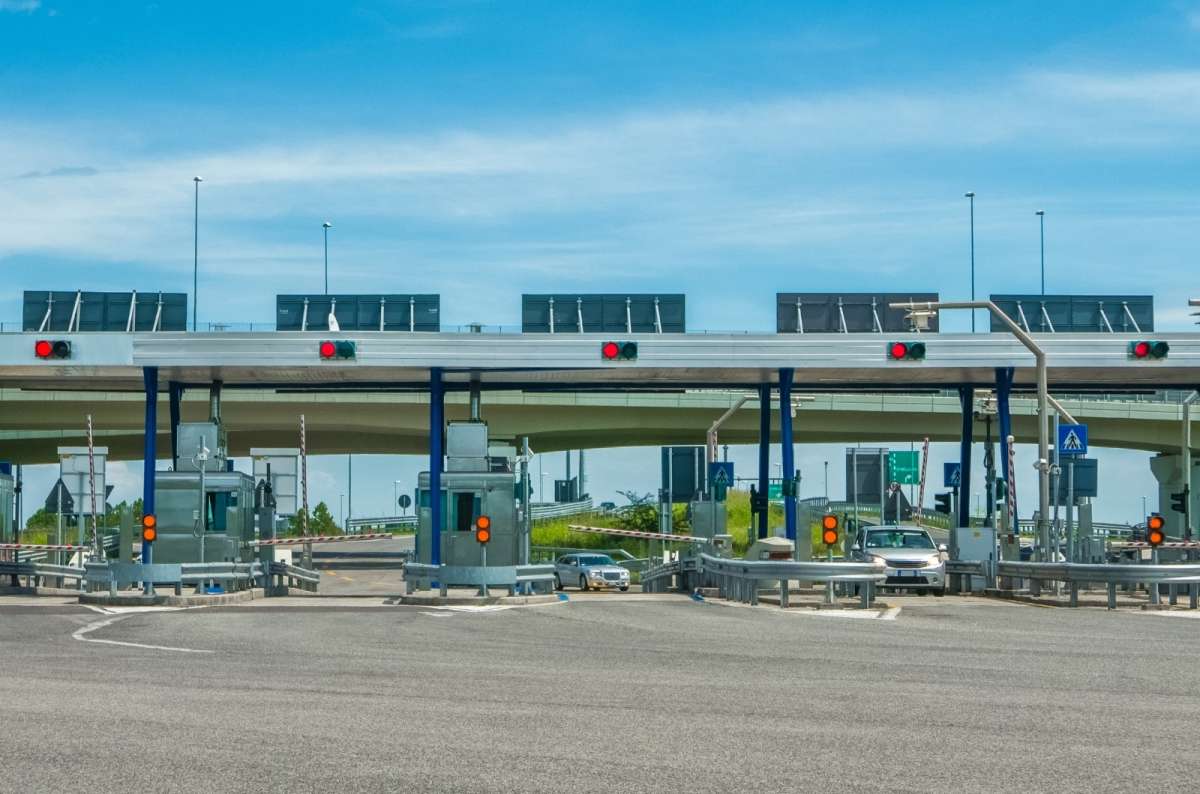
The toll gates might be the calmest part of Italian traffic
Italians turn into monsters the moment they get behind the wheel. Sorry, not sorry—it’s true… and nerve-wracking when you’re just trying to merge into traffic.
That said, I’ll give them some credit—they’ve improved over the years. On my latest visit in 2025, they felt more like little monsters than the original driving Godzilla.
Some of my observations about driving in Italy:
-
Italians are reckless drivers; they don’t care about anyone else on the road but themselves.
-
There are roundabouts everywhere, but locals don’t seem to get a grasp on how they work, so they just do whatever they want, and it gets very confusing
-
If there is a short-distance speed regulation, they just ignore it.
-
The police (in Italy it's carabinieri) are surprisingly strict about speeding tickets, so stick to the rules even if no one else does. The police will fine tourists and locals, the locals just don’t give a damn.
-
Older people are usually more responsible drivers.
-
In mountain areas, local drivers are either incredibly slow or too fast and on the wrong side of the road.
-
The motorways in Italy are called Autostrade, and they are charged at toll gates. The cost varies in different regions, but usually you pay EUR 15 to 20 per 100 km (GUSD 17.50–24 per 62 mi).
-
When paying at the toll gate, don’t use the Telepass lane. It is an electronic toll system used mostly by locals. You don’t want to be backing out of it with dozens of cars behind you.
-
The city parts of the highways are not charged. You have to take the biglietto (the ticket) at the beginning, but you return it at the exit without paying the toll.
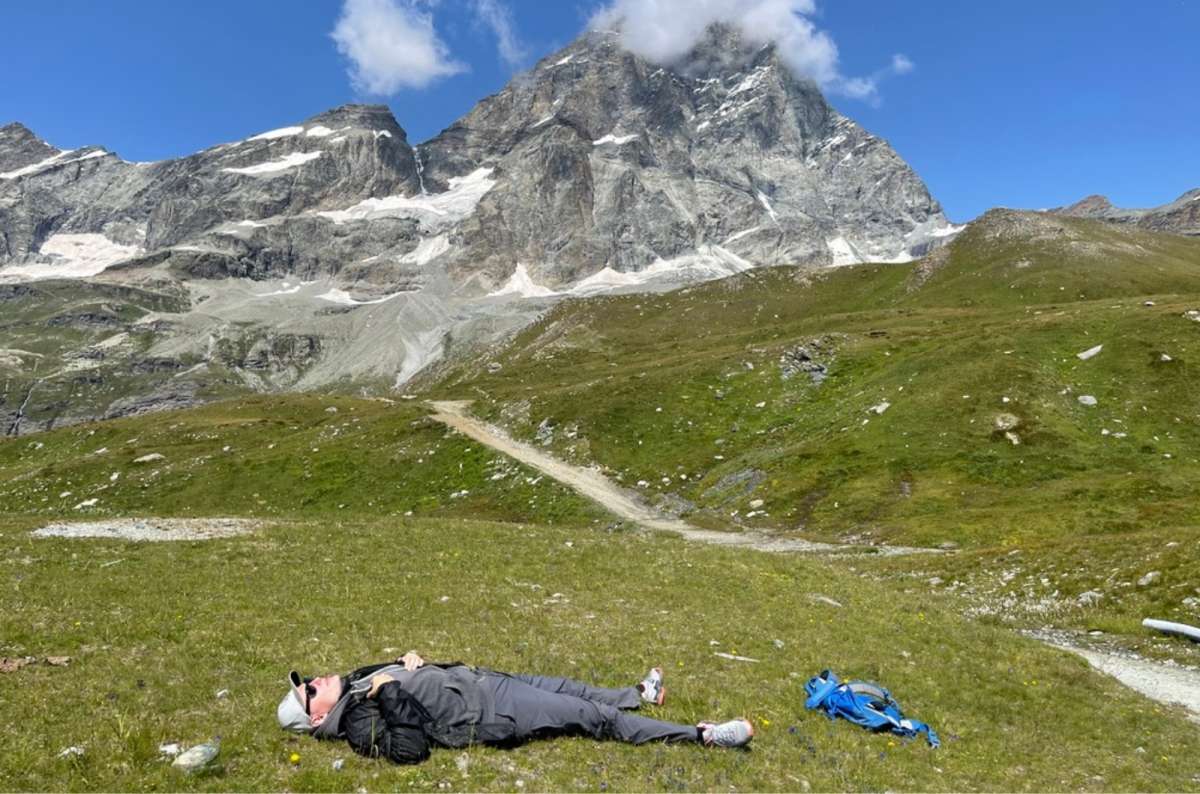
Honestly, driving in Italy might make you want to just run away into the mountains and use walking as the sole means of transportation @ Matterhorn
Speed limits in Italy
As I said, locals usually don’t bother with the speed limits, but you should since the police will fine you strictly. These are the basic speed limits in Italy:
- Strade urbane (towns and residential areas): 50 km/h (30 mph)
- Strade extraurbane secondarie (outside towns): 90 km/h (55 mph)
- Strade extraurbane principali (dual carriageway/highway): 110 km/h (68 mph)
- Autostrade (motorway): 130 km/h (80 mph)
10. Be Prepared for Chaotic Parking in Italian Cities
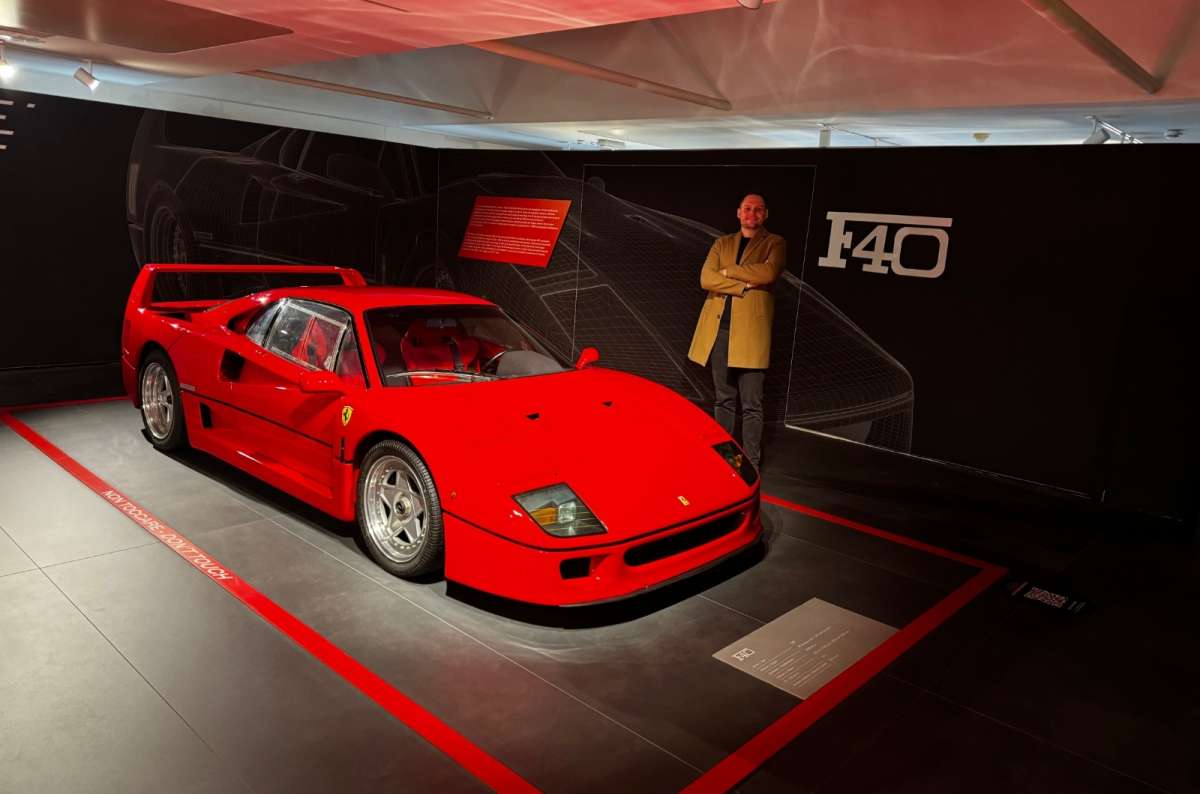
If you’re rocking a ride like this, then you definitely don’t want any damage happening to it @ Museum Ferrari Maranello
Parking in Italian cities is a challenge in itself, and unless you want to risk damage to your car, here are my pro tips:
-
Always park parallel to the curb (not nose-in). It gives others fewer opportunities to scratch or bump your car.
-
Use the EasyPark app—It’s not only affordable but also helps you find legal parking spots. It saves you the hassle of trying to decode confusing parking meters.
-
Book hotels outside the city with free parking if you’re traveling by car. Overnight parking in city centers can be shockingly expensive—sometimes over EUR 80 per night.
-
Consider parking in shopping malls—These are usually monitored by security, better maintained, and fairly priced. They’re often located near the city center, making them a practical choice.
11. Learn about the Highway Toll System in Italy
I was nervous the first time I drove in Italy. I was a young driver and had no idea how the toll system worked. But after a few visits, I actually came to love their toll gates—they’re simple, fast, and efficient.
That said, Italy is one of the most expensive countries in Europe for driving. Expect to pay about EUR 0.10 to EUR 0.30 per kilometer driven on highways (autostrade).
My Top Tips for Using Italian Toll Roads:
-
Always choose the lane with card symbols (Visa/Mastercard) for credit card payments.
-
If you’re unsure, head to a booth with an attendant. In my experience, they usually speak English and are happy to help.
-
When you enter the highway, you’ll get a ticket. That’s it. You’ll only need it at the end toll booth, so you pay upon exiting the highway. The total cost is calculated based on the distance you drove since you got your ticket. Simple.
Maximizing sightseeing
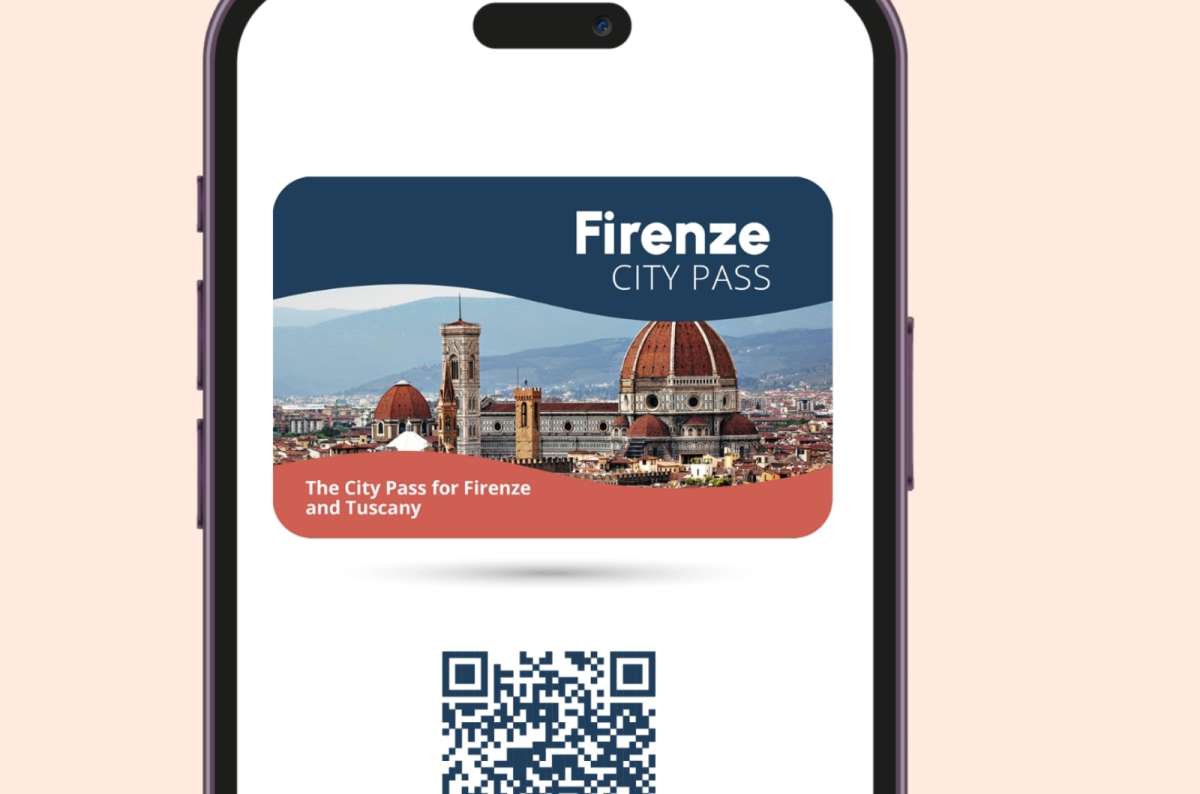
One of these will certainly come in very handy
12. Always Look for a City Pass
Another money-saving hack. When you plan to hit the sights in some area, always look if there’s some kind of city pass or city card. Most tourist places have one that offers free entry to 80 museums, castles, and other attractions as well as free public transport (or at least a discount).
For example, we bought the City pass in Turin for 2 days, which costs 39.90 EUR. It allows free entry to most tourist attractions in Turin and also provides discounts for public transport tickets. In my experience, the 2-day pass is worth it. The one-day card allows only 3 free entries per person and costs 29.90 EUR.
Here is a list of some other big-city cards that may come in handy:
- Roma Pass (Vatican museums and churches are not included)
- VeneziaUnica City Pass
- Firenzecard
- Torino+Piemonte Card
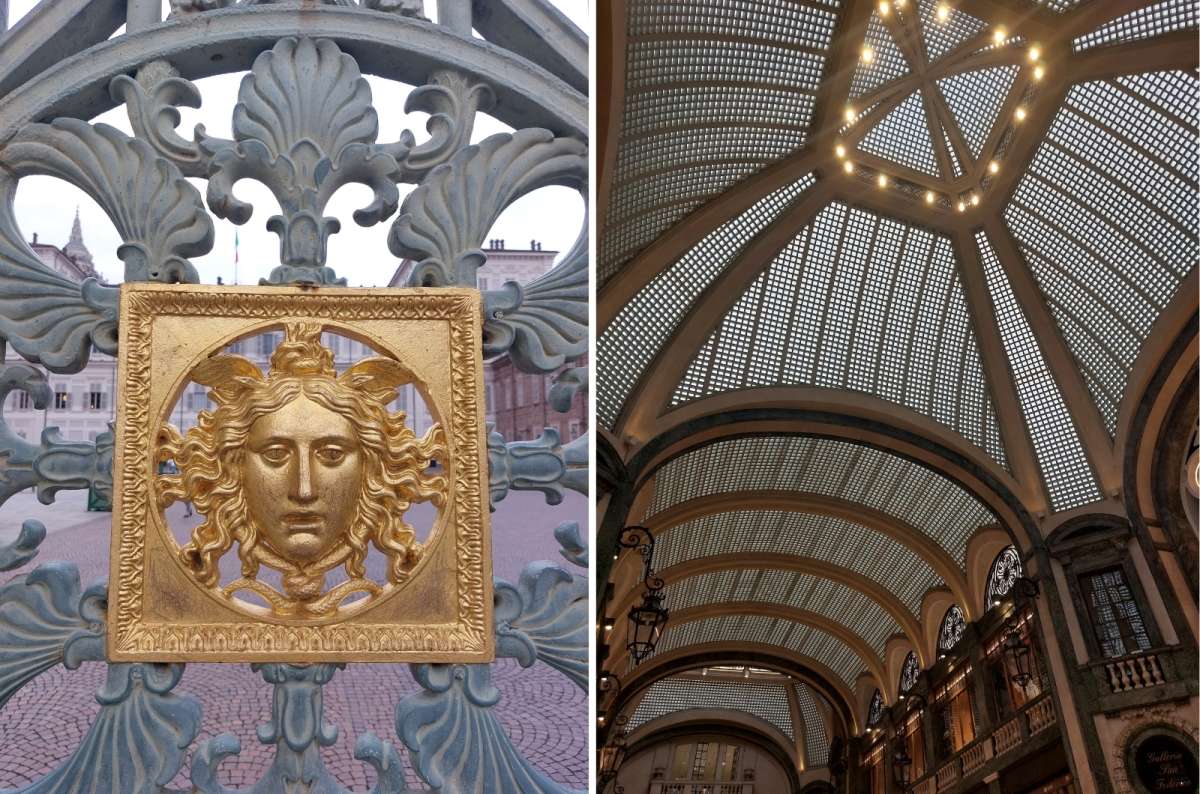
I enjoyed looking for design and architectural details in Turin, Italy
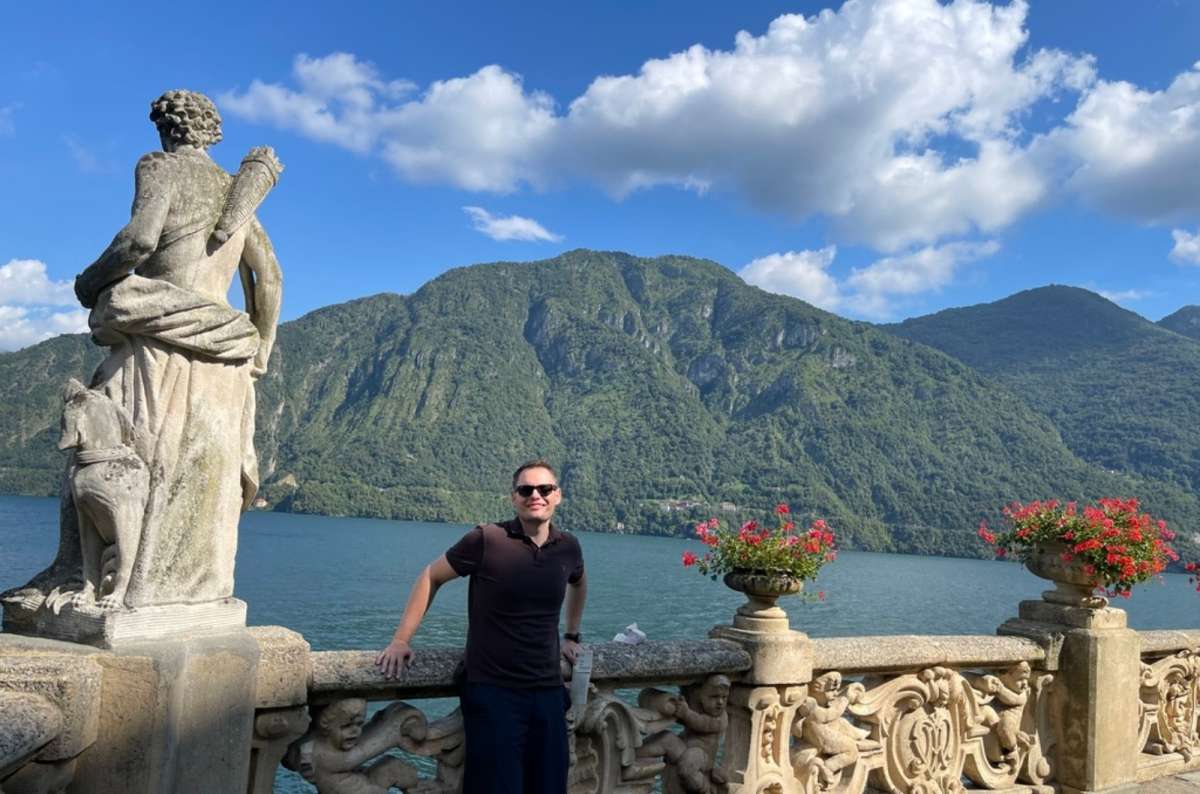
And if you decide that getting a pass is too much of a hassle, Italy has plenty of other things to offer, like Lake Como
13. Advanced Bookings for Tourist Attractions are a Must in Italy
This might sound obvious, but is it really? Most travelers think booking tickets a week in advance is enough. Not in Italy.
Just last week, I had to break the news to a friend heading to Florence that she had zero chance of seeing Michelangelo’s David or climbing Brunelleschi’s Dome, because she hadn’t booked ahead.
In popular cities like Florence, Rome, or Venice, major attractions can sell out weeks in advance, especially in high season.

My Tips:
-
Plan your Italian city itinerary at least a month in advance.
-
Buy tickets online at least 4 weeks ahead for major sights like the Colosseum, Uffizi Gallery, Vatican Museums, or Duomo climbs.
-
Use official websites: most museums, cathedrals, and cultural sites have user-friendly booking systems with secure payments. There’s no excuse unless you’re a very last-minute traveler.
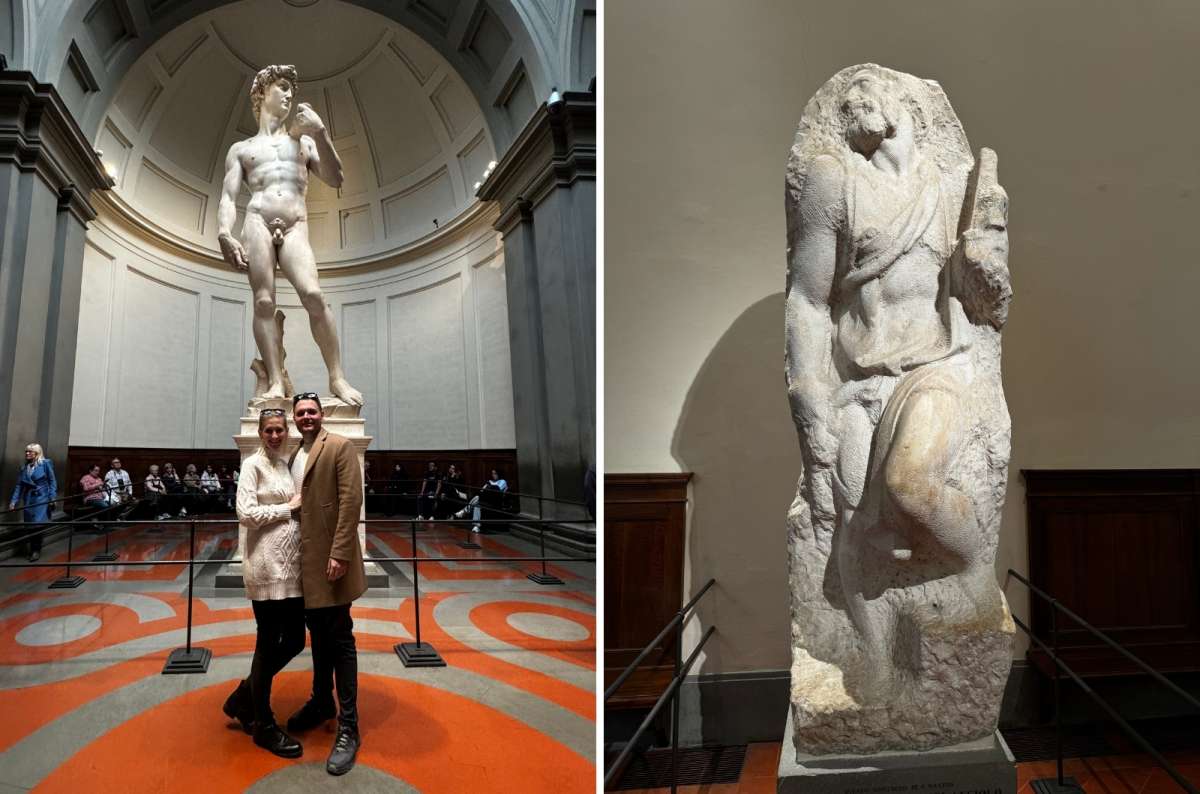
No way you’re going to see David without booking in advance @ Galleria dell’Accademia di Firenze
Final Thoughts: Italy Doesn’t Care If You’re Ready—So Be Ready
Italy will either steal your heart or test your patience—and if you’re not prepared, it’ll do both at once. After more than 20 visits, I’ve learned (often the hard way) that knowing what to expect is half the battle. This isn’t the country for winging it unless you enjoy sweating through your clothes while waiting for a bus that never comes, or showing up to a “closed for siesta” sign when you’re starving.
Skip the rookie mistakes, learn how the locals actually do things, and accept that Italy runs on its own chaotic but charming logic. Do that, and you’ll have the kind of trip that doesn’t just fill your phone with photos—but your brain with stories worth retelling.

I hope you’ll enjoy your trip as much as we enjoyed ours!
You might also be interested in reading:
- Cinque Terre Itinerary for 2 Days: A Perfect Weekend Trip
- Food of Italy: 12 Facts You Didn’t Know
- A Sceptic Visits the Turin Shroud: It Sucks and It’s Fake Anyway
- What to Do in Turin: 9 + 1 Places to Visit
Sometimes, all you need to do is take the first step... I've filtered out the best hotels in Parma for you
Save it for yourself to come back to later, or share with your friends on social media!
This post contains affiliate links. If you make a booking through one of my links, I may earn a small commission—at no additional cost to you. Thank you for your support!
What will you learn in this article?
1. When to Travel to Italy: What to Expect in Each Season
3. Fuel Up the Smart Way and Save Money
4. Save Money on Hotels by Traveling in the Shoulder Season
Etiquette & Italian cultural tips
5. Make Restaurant Reservations: Don’t Leave It to Chance
6. Understand the Tipping Culture in Italy
7. Check the dress code before visiting a church
8. Slow Down and Enjoy a Siesta
9. Know the Written and Unwritten Rules of the Road
10. Be Prepared for Chaotic Parking in Italian Cities
11. Learn about the Highway Toll System in Italy
12. Always Look for a City Pass
13. Advanced Bookings for Tourist Attractions are a Must in Italy




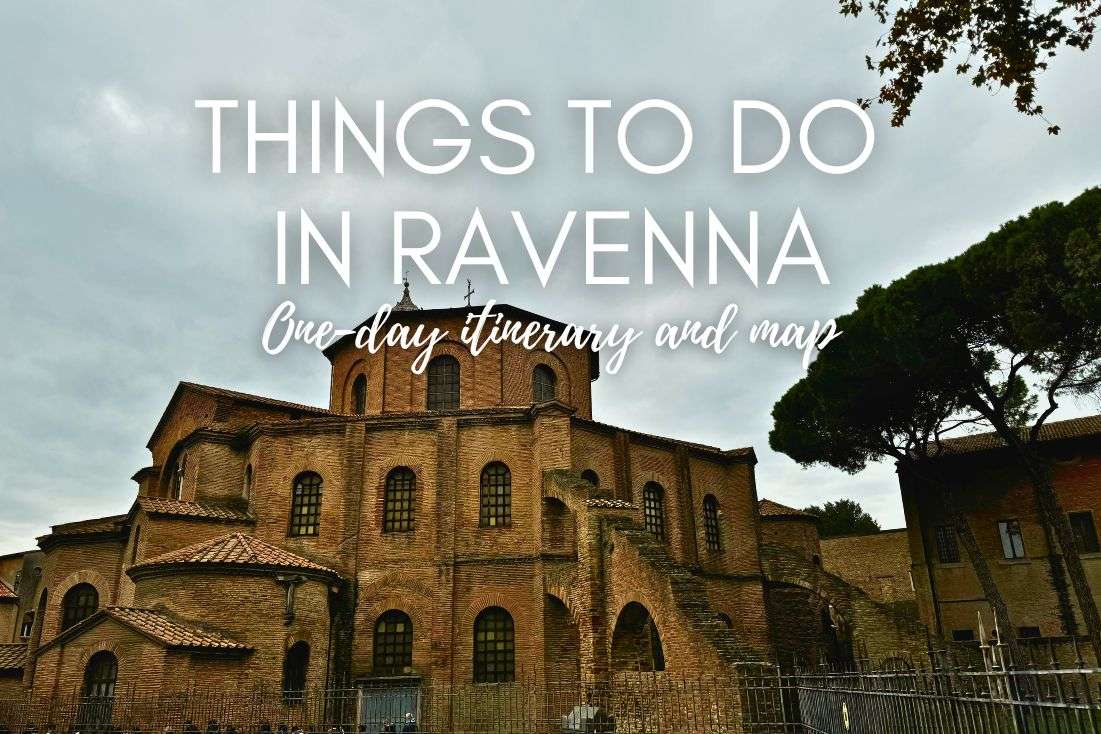
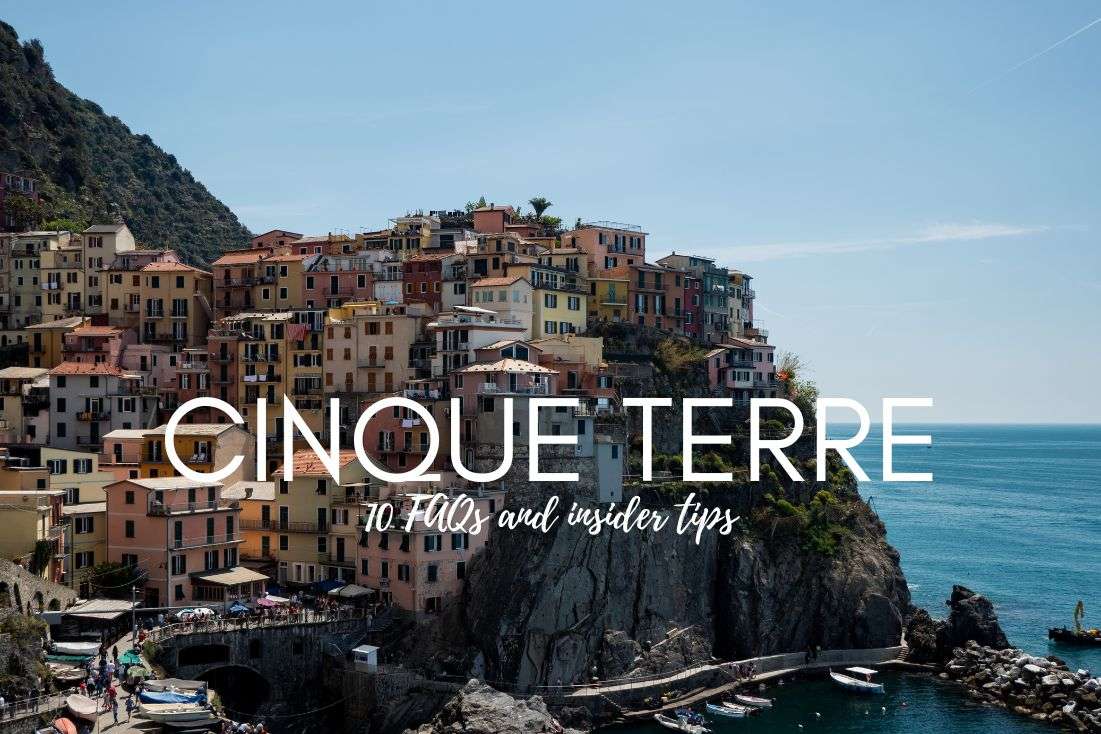
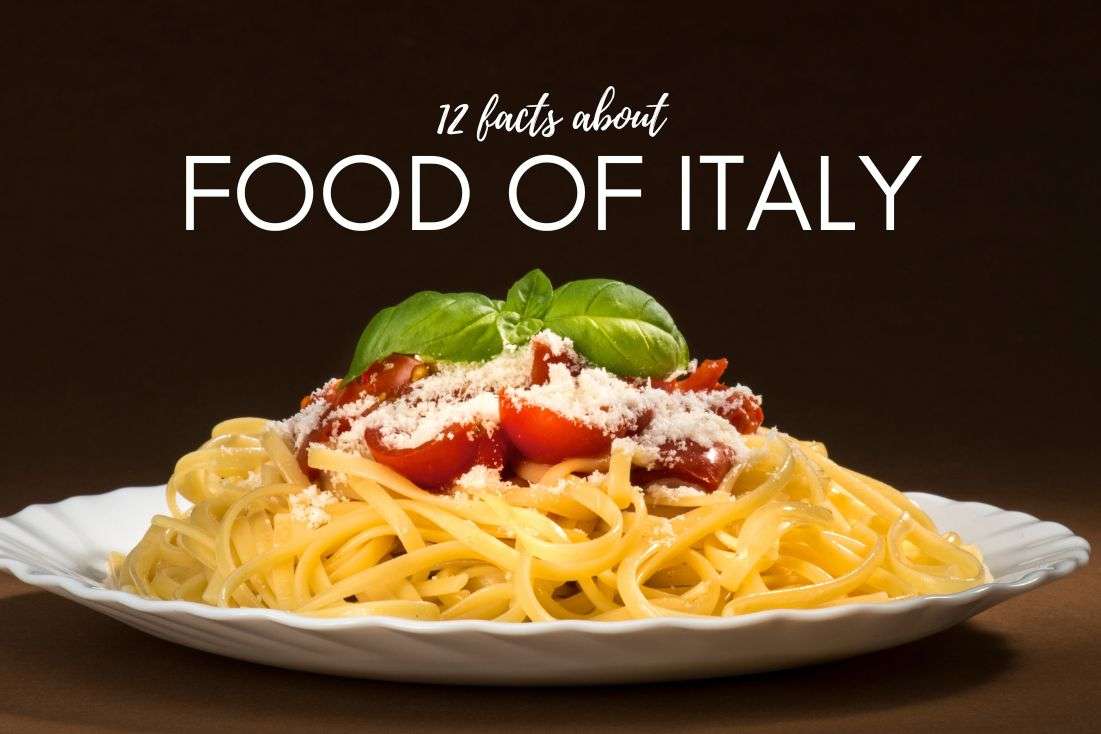



Comments | Thoughts? Give us a shout!